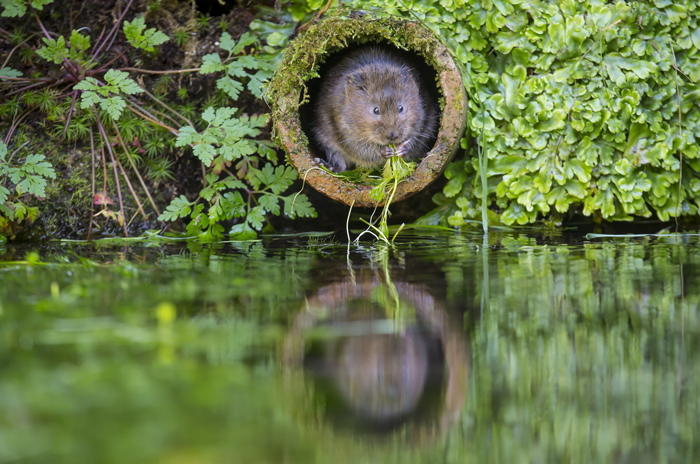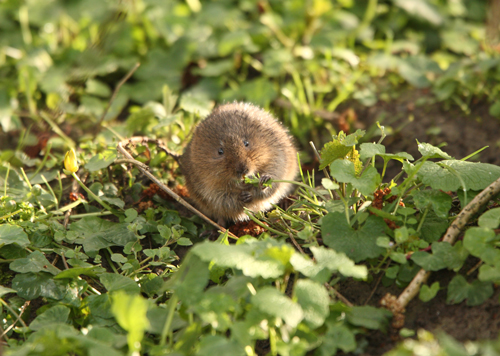The race is on to save ‘Ratty’
Once a familiar sight along our waterways, water voles have rapidly disappeared from much of our landscape, experiencing the most serious decline of any wild mammal over the last century. The shocking drop in numbers is due to the release and spread of non-native mink across the countryside and also loss and degradation of much of our waterways.
To ensure a better picture of what is happening to the species nationally, the People’s Trust for Endangered Species (PTES) is launching the first ongoing National Water Vole Monitoring Programme across England, Scotland and Wales. They will be working in collaboration with The Wildlife Trusts, Natural Resources Wales, Scottish Natural Heritage, the Environment Agency, the RSPB and Natural England.
The decline of the water vole was first demonstrated in two national surveys conducted by The Vincent Wildlife Trust in 1989-90 and 1996-98. The sites visited during those two surveys will form the basis of the National Water Vole Monitoring Programme. By regularly surveying these sites, PTES will be able to identify any changes that have happened since the late 1990’s as well as detect any emerging national trends.
PTES is now calling for volunteers to get involved in the monitoring programme by conducting an annual field survey on a single site and while no experience is required, those taking part will need to know how to identify water vole field signs. Participants will be able to choose one or more of the nearly 900 pre-selected sites across England, Wales and Scotland and will be expected to survey their site once a year.
To find out more about taking part in the monitoring survey please log onto:
www.ptes.org/watervoles
Programme co-ordinator, Emily Thomas, explains that in the last couple of decades conservation groups have been working hard to try and save the much loved water vole: “However, it’s difficult to track the overall effectiveness of this work without seeing how the national picture has changed since the 1990’s,” she said. “The National Water Vole Monitoring Programme will show where water voles are and in what numbers, as well as where they’ve disappeared, allowing us to plan and carry out effective conservation actions that will really make a difference to water voles,” she continued.
The water vole (Arvicola amphibious) is our largest vole and is found throughout England, Scotland and Wales. Their numbers started to decline during the 1940’s and 50’s when the intensification of agriculture caused the loss of habitats, but the most devastating factor to their decline occurred during the 80’s and 90’s due to the increase of the American mink. They are also threatened by the pollution of watercourses and severe winters and droughts.
Data gathered from the monitoring programme will be submitted to the National Water Vole Database and Mapping Project, so that it can be included in the national distribution and alert maps.
Through the monitoring programme, PTES will bring together all the valuable work that is being carried out throughout the country, as well as monitor selected historical sites, to establish any changes in population and to help guide future conservation efforts.
If you would like to help or for further information please log onto:
www.ptes.org/watervoles
Picture credits: © Water Vole (top banner) Ian Schofield; Water Vole (centre) Iain Green. (Used with kind permission: People’s Trust For Endangered Species)



